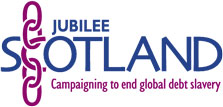(Heavily Indebted Poor Country Initiative)
| Start of section |
| Reports & publications |
| Education |
| Who supports us |
(Please use the links at the top of each section to go to the relative subject in the World Bank website to find out more on the topic)
The World Bank and IMF launched the HIPC initiative in 1996 so that countries owing them money could see their debt repayments reduced to a financially affordable level. It relies on the governments of creditor countries contributing their full share to a debt relief fund, while each country applying for assistance begins to follow a set of economic policies approved by the IMF. Before receiving eventual full debt relief from the HIPC fund, the government of the indebted country must demonstrate that it has established these policies and can develop projects for reducing conditions of poverty among its people.
The
HIPC Process
The first step by the IMF and World Bank is to
carry out an analysis of each nation’s level of external debt in
relation to its income from exports of goods and services. If the sum
determined is more than 1.5 times that of export revenue, the debt is
judged to be unsustainable and the country may become eligible for HIPC
assistance. This decision also depends on certain conditions in the country,
as indicated by annual assessments of public policy, levels of social
inclusion, and institutional management. Persistent and serious difficulties
such as civil unrest or governance challenges present a barrier for the
country – at present, there are ten nations which have not been
able to progress into the HIPC programme due to conflict or political
instability. This is a significant problem because the need for widespread
reconstruction following conflict creates pressing demands on government
budgets and is likely to lead to more loans being taken out in the effort
to cover costs.
Poverty
Reduction Strategies
During the first stage of their application the government
of the indebted country works to produce a Poverty Reduction Strategy
Paper (PRSP) detailing their planned programmes for reducing poverty and
increasing sustainable economic growth. This should be achieved in consultation
with civil society representatives (eg. churches, trade unions, pressure
groups, social research institutions) and it could include policies for
improving governance, or realistic funding levels for new economic plans.
Decision
point
Following assessment of the progress made with policy development,
the executive boards of the World Bank and IMF formally decide on a country’s
eligibility and the international community commits to an agreed target
for debt reduction. From this point, the debt service payments of any
eligible country will begin to be provided from the HIPC fund.
Completion
point
Countries must maintain economic stability, carry out the
key structural and social reforms agreed at decision point, and implement
a Poverty Reduction Strategy satisfactorily for at least one year. Once
a country has met these criteria, it can reach its completion point, at
which time lenders are expected to provide the full relief committed at
the decision point. So far 18 countries have reached completion point.
Poverty
and Social Impact Analysis
PSIA is an assessment of the link between a nation’s
new policies and any changes in the welfare of its population, particularly
those living in conditions of poverty; for example in Mozambique the government
has surveyed the impact of reforms in education costs on levels of sustained
primary school enrolment. PSIA is widely carried out in the utilities,
public sector, agriculture, and trade sectors, and ideally it helps the
country to expand its capacity for social and economic analysis.
For more information on the HIPC process please click
below to visit the
World Bank Debt Department
| © 2004 Jubilee Scotland | |

 World
Bank HIPC Initiative
World
Bank HIPC Initiative